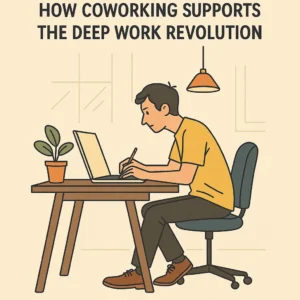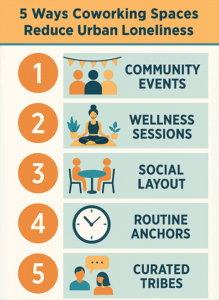The Strategic Business Model of Ather Energy representing India’s Quiet EV Revolution
Real leverage doesn’t shout. It compounds quietly — across software, networks, capital, and time.
In the vast noise of India’s two-wheeler market — where petrol engines roar and incumbents dominate with distribution and pricing muscle — a silent, electric revolution is taking shape. But this isn’t a “battery + motor = EV” story.
This is about strategic leverage. A startup from Bangalore quietly designed an electric scooter, built its own operating system, deployed the fastest-growing charging infrastructure in the country, and turned its early users into community evangelists — all without chasing lowest-price-first principles.
The company is called Ather Energy.
And its business model is not a scooter business. It’s a layered, vertically integrated, data-generating platform strategy. This is a deep breakdown — not for fans, but for founders, thinkers, and builders who understand that businesses are not made of products. They’re made of systems, incentives, and asymmetries.
Explore our podcast
The Blueprint — 9 Building Blocks of Ather’s Business Model
Let’s explore Ather through the lens of Business Model Generation — 9 foundational blocks, all customized to the Indian EV market. But beyond the structure, we’ll explore the leverage within each block — because that’s where the edge lies.
1. Customer Segments: Betting on the New Urban India
Ather didn’t target everyone. They went after those with:
- Disposable income
- Aesthetic awareness
- Environmental bias
- Tech fluency
Think: 28-year-old product manager in Koramangala. A 34-year-old architect in Hyderabad. A startup founder in Pune.
These aren’t just scooter buyers. They’re early adopters. Storytellers. Tribe builders. And they don’t just want transport — they want a signal of being ahead of the curve.
Segments Ather Captures Today:
- Tier-1 and Tier-2 urban professionals
- Affluent college students (parent-funded)
- Environmentally conscious creators and solopreneurs
- Employees in IT, fintech, design, and consulting
Segments Ather Prepares For Tomorrow:
- Delivery fleet partnerships
- Shared mobility aggregators
- Government and PSU fleet electrification mandates
The insight? Start with a high-value niche. Own them. Then expand laterally.
2. Value Proposition: More Than a Scooter
What is Ather selling?
Ask someone riding one, and they’ll say “smart EV.” But underneath that:
- Speed: 0–40 km/h in under 3.3 seconds
- Style: Minimalist dashboard, Apple-like UX
- Software: AtherStack powering maps, diagnostics, OTA updates
- Sustainability: Zero emissions + energy efficiency
- Community: A network of early believers, not just customers
But the real value is layered — like nested loops of advantage.
| Layer | What It Enables |
|---|---|
| Product | EV ownership with speed and sleekness |
| OS (AtherStack) | Continuous software evolution |
| App Ecosystem | Data, feedback, feature unlocks |
| Charging Grid | Freedom from “range anxiety” |
| Brand Ethos | A symbol of clean-tech aspiration |
| Tribe | Word-of-mouth marketing flywheel |
This is not Hero Electric. This is Tesla Lite for India, with its own architecture — both literal and philosophical.
3. Channels: Control the Stack, Control the Brand
No dealerships. No chaos. Ather deliberately broke the traditional automotive distribution model.
They built:
- Experience Centers — physical brand showrooms operated in a hybrid company-owned + franchise model
- Online Pre-Orders — a model learned from Apple & Tesla
- Direct Service & Test Rides — where the brand educates, not just sells
- Ather App — the daily retention channel
- Ather Grid — physical channel for daily re-engagement
- Owner Events — offline, tribe-building channel
This is full-stack brand control.
By owning their channels, they:
- Dictate pricing (no discount wars)
- Curate experience (vs. salesmen gaming commissions)
- Retain data (vs. handing over to distributors)
- Reduce friction (simplified, single-flow process)
Every channel compounds brand trust.
4. Customer Relationships: Users → Fans → Evangelists
Ather doesn’t just convert users. It activates advocates.
That’s the real differentiator.
Their playbook includes:
- Closed-Loop Feedback: App data → performance improvements
- OTA Feature Rollouts: Treating scooters like smartphones
- Owner Forums: For bugs, hacks, mods, memes
- Community Rides & Meetups: Offline reinforcement of shared identity
- Gamification: Riding stats, rankings, custom dashboards
This is retention through participation.
They’re not building customers. They’re building contributors.
5. Revenue Streams: Layered Like a SaaS Business
At surface, Ather sells scooters. But let’s zoom in on the real revenue levers.
| Stream | Description | Notes |
|---|---|---|
| Hardware Sales | ₹1.3–1.7 lakh per unit | Core revenue, low margin |
| Subscription (Ather Connect) | ₹700/month | Software services, diagnostics, navigation |
| Charging Fees | ₹1–2/min | Usage-based revenue from Ather Grid |
| Financing Kickbacks | 2–3% from NBFCs | Partner EMI schemes |
| Accessories | Helmets, mounts, chargers | ~15–20% margins |
| Servicing | Repairs, doorstep pickup | Variable margin |
| Fleet Sales | Logistics, delivery, rental | Emerging B2B stream |
| White-Labeled Tech | Licensing AtherStack | Future optionality |
They’re transforming a hardware sale into a multi-pronged monetization engine.
If Ola sold EVs once, Ather sells you a scooter, then rents your attention, your mobility, and your data stream.
6. Key Resources: Where Real Value Sits
Ather’s resources are not inventory or land. They are:
- AtherStack: Their proprietary OS
- Battery IP: Thermal mgmt + power control
- Ride Data: Heatmaps of user behavior
- Brand Loyalty: Built through 5-star experiences
- Charging Grid: 1,900+ live chargers
- Manufacturing Infra: Hosur factory with 420K+ capacity
- Team: Engineers who code scooters, not just assemble them
These assets compound over time.
They don’t depreciate. They evolve. That’s the difference between assets and leverage.
7. Key Activities: What They Do Daily to Stay Ahead
Ather runs like a hybrid between a hardware company, a software startup, and an energy company.
| Activity | Description |
|---|---|
| Product R&D | New variants, better mileage, faster speeds |
| Software Updates | Fixes, feature unlocks, performance boosts |
| Grid Expansion | Partnering with malls, cafes, offices |
| Factory Ops | Scaling production while reducing defect rate |
| Community Building | Events, online support, social media |
| Local Compliance | EV policy negotiation, city-specific approvals |
| Supply Chain Risk Mgmt | Battery imports, Li-ion procurement strategies |
Every activity is chosen to reinforce defensibility.
8. Key Partnerships: Where Asymmetry Gets Engineered
No company scales alone. Ather’s ecosystem strategy includes:
| Partner | Value Exchange |
|---|---|
| Hero MotoCorp | Strategic investor + vendor access |
| Govt of India | FAME II subsidies (₹15K per kWh) |
| State Governments | EV-friendly roads, electricity access |
| Malls & Cafes | Grid installation, co-branding |
| Financial Institutions | Consumer financing access |
| Google Maps | Turn-by-turn nav integration |
| AWS | Cloud infra for OTA, analytics |
| Local Vendors | Just-in-time components, logistics support |
These aren’t just supply deals. They’re distribution, trust, and speed accelerators.
9. Cost Structure: Investing in Long-Term Compounding
Ather spends like a company building for 10 years — not for next quarter.
| Cost Type | Driver |
|---|---|
| Manufacturing | BOM cost of scooter + battery pack |
| R&D | Hardware + software IP generation |
| Marketing | Brand campaigns + test ride logistics |
| Infra | Charging point installation & upkeep |
| Retail | Experience center setup & staffing |
| HR | Engineering, ops, support |
But here’s the subtlety: much of what they spend on is non-linear.
Unlike petrol-based competitors, software cost doesn’t scale with volume. That’s the real edge.
Ather Energy’s Strategic Moats, Growth Levers & the Business Model Flywheel
When you’re building for long-term leverage, the real business isn’t the product — it’s the system that keeps the product winning.
Strategic Moats: How Ather Builds What Can’t Be Copied
1. Software + Data Flywheel (AtherStack)
Every time someone rides an Ather scooter, they generate valuable telemetry:
- Battery degradation patterns
- Acceleration vs. energy trade-offs
- Geo-data for traffic heatmaps
- Charging station usage data
- Fault detection via sensors
This data trains their OS and improves user experience.
Every update — over-the-air — compounds this advantage.
You can copy hardware.
But you can’t copy behavior-linked data loops at scale.
That’s how a scooter becomes a smart mobility platform.
2. Charging Infrastructure (Ather Grid)
Over 1900 fast chargers, optimized by ride data.
They’re not just assets — they’re habits. Once people anchor their daily route around Ather chargers, it becomes hard to switch.
This isn’t a vendor moat.
It’s a location + trust + behavior moat.
Competitors can match pricing.
They can’t undo geography or erase learned customer patterns.
3. Community Evangelism
Ather doesn’t market through ads. It markets through tribes.
Owner meetups.
Telegram groups.
User-created tutorials.
DIY repair guides.
Hyperlocal rides.
This creates defensibility in the mind — not the market.
And when you own mindshare, distribution gets subsidized.
4. Brand Positioning
Ather never raced to the bottom.
While competitors fight for subsidies and fleet sales, Ather focused on affinity-driven buying.
It’s not the cheapest.
But it’s the most loved.
And in India, love outlasts price.
Growth Levers: Where Ather Can Expand Without Breaking the Machine
1. Geographic Expansion
- New cities = new density = higher Grid ROI
- South India dominance → Tier 1 & 2 cities in North and West
- Target: 100+ cities with local assembly partnerships
More cities = more revenue streams = tighter flywheel.
2. Fleet Sales & Partnerships
Delivery firms want reliable, low-maintenance EVs.
Ather’s software and remote diagnostics make it fleet-ready.
Potential growth avenues:
- Zomato, Swiggy, Zepto partnerships
- White-label fleet units
- Government tenders for EV procurement
This shifts the business from D2C to B2B2C scale.
3. Battery-as-a-Service (BaaS)
Instead of selling batteries, lease them.
Lower upfront costs for users, predictable recurring revenue for Ather.
Think: ₹30/day battery rental with performance guarantees.
Now combine that with predictive diagnostics = maximum battery ROI.
4. Third-Party Licensing (AtherStack)
Eventually, AtherStack could be licensed to other OEMs — like Android was to smartphone makers.
- OTA firmware stack
- Battery analytics
- Ride behavior dashboards
- Cloud-connected maintenance
This makes Ather not just a scooter company — but an EV OS infrastructure provider.
5. Export Strategy
India’s cost-efficiency + Ather’s engineering = export-ready EVs for Southeast Asia, Africa, and LATAM.
Places with:
- Similar urban density
- Two-wheeler dominance
- Subsidy programs or green agendas
Localization via CKD (Completely Knocked Down) kits + partner assembly = scalable global entry.
Business Model Canvas of Ather Energy (Visual Breakdown)
Here’s how Ather’s entire model fits into the 9 blocks:
| Block | Ather’s Strategy |
|---|---|
| Customer Segments | Urban tech-savvy individuals, early adopters, fleets |
| Value Proposition | Smart, stylish, connected EV with ecosystem support |
| Channels | Experience centers, website, Ather Grid, mobile app |
| Customer Relationships | Tribe-driven, participatory, OTA engagement |
| Revenue Streams | Hardware, subscriptions, grid usage, services, accessories |
| Key Resources | AtherStack, charging infra, data, brand, R&D team |
| Key Activities | Product dev, software updates, grid ops, community |
| Key Partnerships | Hero MotoCorp, govt policies, cloud, charging locations |
| Cost Structure | R&D, manufacturing, grid infra, service, marketing |
This isn’t just an EV business model.
This is a platform-in-motion.
Mental Models Behind Ather’s Strategy
Here’s what makes Ather’s thinking non-obvious:
1. Full-Stack Thinking
Control the entire experience:
Hardware → Software → Charging → Support → Community
Why?
Because complexity compounds when it’s outsourced.
But value compounds when it’s integrated.
2. Leverage Loops
- Data → Software → Experience → More Users → More Data
- Charging Locations → More Riders → More Stickiness → Better ROI → More Locations
These are self-reinforcing loops, not one-time wins.
3. Delayed Monetization, Accelerated Trust
They didn’t extract early. They compounded loyalty.
Now with pricing power, they can monetize multiple layers.
Most brands sell first, earn trust later.
Ather inverted that sequence.
4. Scarcity Signals Quality
Ather didn’t push aggressive expansion from day one.
They chose intentional scarcity: waitlists, invite-only events.
It made the brand aspirational.
It filtered the right users.
It created desire density.
5. Behavioral Lock-In
The more you ride, the more data you generate.
The more data, the more value Ather can deliver (via OTA upgrades, insights, route optimizations).
This is like turning a scooter into a habit engine.
Closing Reflections
Ather Energy isn’t just building EVs.
It’s reprogramming how India moves, pays, and thinks about ownership.
It built leverage into:
- Its product (via OS)
- Its market (via brand)
- Its revenue (via layers)
- Its users (via loyalty)
- Its future (via platforms)
And it did it all in a market that’s price-sensitive, infrastructure-starved, and regulatory-heavy.
This isn’t a scooter story.
It’s a modern startup’s playbook —
in a vertical nobody thought was winnable by first-timers.
If you’re a startup founder, submit your startup story for free with us
Did you know? Startups like to use our coworking space in Bangalore
Learn more about our coworking space on our YouTube channel Work Theater Studios where we talk about a variety of topics including personal finance, entrepreneurship, business and life.




